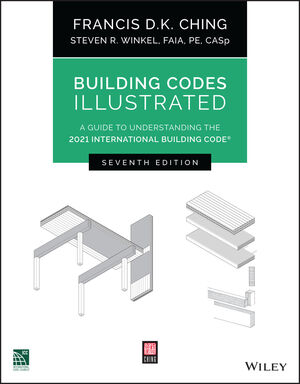The solidarity of building officials nationwide is being put to its biggest test this summer as the nation’s highest profile code selection process gets underway in Sacramento, Calif.
Next month, the California Building Standards Commission will make it’s initial model code selection to be considered during the state’s 2004 triennial code cycle. The commission will choose between the International family of buiding codes, developed by the International Code Council and backed by the vast majority of building officials, or the NFPA 5000 set of codes, developed by the National Fire Protection Association and supported by fire officials and plumbing and mechanical trades.
A third option, maintaining the state’s existing code—based on the outdated 1997 International Building Code—may also be considered, but is an unlikely outcome considering resistance from building owners and developers who have been hit with higher insurance costs attributed to the state’s outmoded building code.
While it would be nice to imagine the BSC is capable of maintaining the highest level of impartiality and fairness in making its selection, a lot of the talk coming from Sacramento these days suggests the commission has been undermined by the influence of special interest groups and political patronage. If you’re looking to find an example of democracy at its finest, the commission’s chambers does not appear to be one of the better venues.
Meet the guv’nor
Members of BSC are appointed by the governor and approved by Senate confirmation. Governor Gray Davis, now in his second term, has appointed every current member of the commission, except one position that remains vacant. While commission members are meant to represent a broad cross-section of building and construction professionals, building inspectors, fire officials and the public, the BSC’s makeup is more than a little tilted in favor of plumbing trades. While you will not find a single plasterer, bricklayer, mason, carpenter, electrician or roofer on the commission, you will find three members with strong ties to the plumbing industry, including: Tim Brink, a plumbing contractor and former president of the California Plumbing and Mechanical Contractors Association; Barry Broad, an attorney and lobbyist for the Pipe Trade Council; and Sidney Cavanaugh, a representative of plumbers and pipefitters unions.Two other commissioners also have strong ties to the NFPA. Commissioner Donald Dickerson is a member of the Plumbing Code Committee of the International Association of Plumbing and Mechanical Officials. IAPMO is a partner with the NFPA in the development of the Comprehensive Consensus Codes set, which includes NFPA 5000. Commissioner Jimmy Hill is a member of the executive board of International Fire Marshall Association, a subordinate organization of the NFPA.
While I don’t know that Davis has relied on any building code litmus test in making his BSC appointments, it is no secret that the governor’s interests are closely aligned with those of the plumbing trades. Davis drew heavy criticism during his 2002 re-election campaign for reportedly limiting access to the governor’s office to major campaign contributors, and the governor’s record shows a long pattern of support for the plumbing trades, which have contributed generously to his coffers.
Given the NFPA-friendly nature of the BSC, it may seem that Guantanemo Bay detainees have a higher likelihood of getting a fair hearing than the “I” Codes. However, supports of the International codes have not been sitting quietly on the sidelines. As the BSC code selection has neared, “I” Code proponents have been speaking out in growing numbers to draw attention to the politically-tainted selection process.
A frustrated league
Over the past year, the California Association of Licensed Building Officials has been a vocal critic of Davis and the BSC, appealing to the governor that “politics be taken out of the code adoption process in California.” In a letter to Davis last fall, CALBO’s board of directors related the “increasing frustration” of the organization with the actions of the BSC. “The Golden State is being badly tarnished in the eyes of the rest of the code writing, code adoption and code enforcement community who now look at California as an example of what not to do,” noted building officials.This past March, the Housing Committee of California’s League of Cities entered the debate, voting to support adoption of the International Codes. Soon after, the Western Wall and Ceiling Contractors Association/Technical Services Information Bureau and the Northern California Drywall Contractors Association/Drywall Information Trust Fund announced their support of the International Codes. The endorsements are just a few of a long list of “I” Code supporters that have stepped forward, including the National Association of Homebuilders, the American Institute of Architects and the Building Owners and Managers Association.
It’s unfortunate that the BSC has so far opted not to heed the call for a fair and impartial code selection process, and it would be a grave disservice to the people of California if the interests of a politically-connected few ultimately win out over the majority. Perhaps the saddest outcome would be that California’s next building code is selected without anyone paying attention the only thing that’s supposed to matter, the relative merits of the competing model codes.
During its last triennial code cycle, the BSC commissioned an 18-month-long study by a special committee that advocated adoption of the International Codes. The BSC dismissed the committee’s findings, arguing that more time was needed to review the recently adopted model code.
This time around, the BSC has had plenty of time to review the International Codes, although the ink is hardly dry on NFPA 5000, which was first published just last November.
“The differences between the IBC and NFPA 5000 are significant,” notes Michael Logue, director of WWCCA’s Technical Services Information Bureau. “While impressive for a document so young, the NFPA 5000 would require an entirely new understanding how the building code is used and enforced. The last thing we need in this building climate is more confusion in the inspection and interpretation process.”

